Thoroughbred racing in Puerto Rico is booming, with its pari-mutuel handle in 2021 having the potential to reach levels not seen in 10 years. Gross revenue from video lottery terminals, a portion of which bolster purses, is on-track to set records this year as well.
These fat times offer relief to an island that suffered catastrophic losses from Hurricane Maria in 2017 and more economic damage due to shutdowns due to the COVID-19 pandemic, but the windfall is also refocusing attention on existing problems and creating new ones.

An unbalanced purse structure at Camarero Race Track is attracting a record number of inexpensive racehorses being imported from the United States for short-term gains. Because most of these horses are already at the tail end of their racing careers, the influx is overtaxing the island's aftercare network. The purse structure also threatens to continue undermining an already weakened native breeding industry.
From January through July, Camarero reported a total handle of more than $96 million. If the track continues to average $13.7 million per month as it has for the first half of the year, it will report a year-end total handle around $164.4 million. Total handle has not been this high since it reached $162.8 million in 2011.
Camarero also gets purse money from 8% of the net win from video lottery terminals, which began operating in 2009. From January through June, racing's take from the VLTs has exceeded $32.8 million.
In addition to richer purses, owners and trainers are getting much more from a handle-derived bonus Puerto Rico offers called retroactive pay. A $4,000 claiming race, for example, may offer a $6,000 purse but with the retroactive pay, the total value of the race can more than double. At the end of each month after purses, bettors, the government, off-track betting agents, and Breeders' Fund contributions are all paid, what remains from the handle is split between the racetrack and the owners. The owners' share of the handle is then paid out as retroactive pay. In June, the retroactive pay was around 130%, so the payout on the $4,000 claimer was actually $13,800.

"It is a fact that the purse structure at Camarero benefits the cheap claimer," said Ervin Rodriguez, president and CEO of Camarero. "In terms of purse versus claim price, the cheaper horses have a disproportionate advantage."
Many in Puerto Rico's racing industry believe the purse structure needs to be changed to create more incentives to run better quality horses and also provide more support to the native breeding industry, which has been suffering.
"(Camarero's) purse structure doesn't make any sense," said Dr. Jose Garcia Blanco, a veterinarian and bloodstock agent for the Puerto Rico Horse Owners Association. He also served on a purse review committee that explored ways to improve Camarero's racing product. "It incentivizes running these cheap horses. Our purses need to go according to your investment in the horse."
Garcia Blanco said some purse reforms were adopted earlier this year with 2-year-olds races. Purses were left unchanged at the lowest claiming levels but increased for allowance races and higher-level claiming races.
"If you win a non-restricted, unconditioned race for a native 2-year-old that purse is around $43,000. That's pretty good money," he said. "Now, when you realize for $1,000 you can keep a horse in Puerto Rico at Camarero for a month, this is a no-brainer. Our day rates are low, our purses are good; people should be bringing better horses to Puerto Rico to race."

Rodriguez said Camarero has always been in favor of improving the quality of its equine population and to "approach the financial remuneration to the better horses proportionately with their cheaper counterparts.
"Over the years, Camarero has provided horse owners with financing options to purchase yearlings and 2-year-olds in the USA, making it easier to bring young, quality horses," Rodriguez said. "Camarero was in favor of the increase in purses for our 2-year-olds this year, which benefited more allowance and high claimers. Also, Camarero's stockholders as horse owners are among the highest investors in quality, higher-priced horses. We do favor a more attractive purse structure for our better, high-quality horses. Unfortunately, this is not for Camarero to decide."
Another difference with racing in Puerto Rico compared to the U.S. is the relationship between the racetrack and the federal government. Camarero is privately owned by a group of shareholders, who acquired the track in 2007. The racing secretary's office, however, is run by an employee of the Puerto Rico Gaming Commission and is responsible for condition books and sets the purses, according to Rodriguez.
Restructuring the purses also could help Puerto Rico's breeding industry, which has been in a steep decline since 2009 when VLTs began operating. Between 2000 and 2008, the Puerto Rican foal crop fluctuated between 515 and 592. Foal production slid to 429 in 2009 and plunged to 204 by 2018. The projected foal crop for 2020 is 215.
Foal production has suffered in part because the Breeders' Fund, which provided incentive money for native-foaled horses racing in Puerto Rico, is supported exclusively by a portion of the handle. Before the legalization of VLTs, Puerto Rico's pari-mutuel racing handle regularly exceeded $200 million annually. The handle fell to $180.7 million the first full year VLTs were running and continued dropping to $112.6 million by 2016. Money going into the Breeders' Fund was around $1.2 million in 2007, according to Puerto Rican breeder/owner Eduardo Maldonado, and dropped to $600,000-$700,000 by 2019.
Meanwhile, the gross on VLTs grew from $82.9 million in 2010 to $369.9 million by 2016.

"We used to have two or three farms that would produce 80 to 100 foals each," said Maldonado with prominent farm Potrero Los Llanos. He also served as executive director and president of the Puerto Rico Breeders Association and is a member of the Camarero purse review committee. "As the Breeders' Fund got smaller, those checks got less and less every year. We are an agricultural business and you don't know what your crop is going to be from year to year. If you have a bad year, those incentives help you survive."
To provide long-term growth, Maldonado said he would like to see the Breeders' Fund supported by a piece of the VLT revenue since the electronic games have negatively affected the pari-mutuel handle. Now, Maldonado recognizes this might be a hard sell right now for the breeding industry because the current handle is high and producing incentive payments at a level not seen in years, but he knows, too, that the current boom is unlikely to last.
"The current situation is multifactorial," Maldonado said. "We have stimulus checks that came into Puerto Rico, and we're actually getting money from Hurricane Maria, the earthquake, and the pandemic. I have to give some credit to the owners, too, because they have worked on the racing program, but I think this is a bubble that is going to burst at some point.
"Our farm is going to celebrate our 50th year next year. My grandfather was in the business, and I've been in more than 30 years. With changes, we would have a really thriving and modern horse racing industry in Puerto Rico," he said.
Garcia Blanco said he could not speak to the possibility of VLT money being committed to the Breeders' Fund. He does believe, though, that improving the purse structure further will benefit breeders.
"I think once everyone sees how well it goes this year for the 2-year-olds, it will be easier for more changes," he said. "If you put more money that's going into the retroactive into the purse, then everybody collects percentage-wise. You're spreading the wealth around to the whole industry.
"If you raise the purses, then people are going to want to buy more native horses," he continued. "And then if they buy more native horses, then they'll pay more money for them. What are the breeders going to do then? Get more mares and raise more horses. That's the direction that it should go to. If we don't do this, our native industry is going to be doomed.
"But honestly," he continued, "when we started racing our 2-year-olds this year, people were ecstatic. The average price for a native yearling last year was $16,000. All you need to do is win one of those races and your horse is already paid for."









